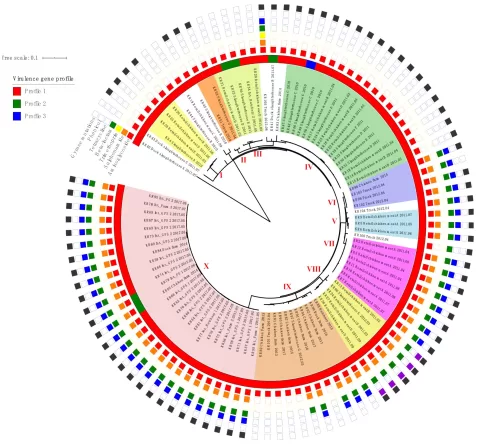Wesselsbron virus in camels has emerged as a concerning issue in the Borana Zone of Ethiopia, where recent studies indicate a direct impact on camel health. This viral infection, primarily known for affecting livestock such as sheep and cattle, poses significant risks to camels, leading to alarming disease outbreaks. Reports of increased mortality rates among these animals highlight the need for awareness and prompt action among camel farmers in the region. Understanding the implications of Wesselsbron virus is crucial, not only for preserving camel populations but also for safeguarding the livelihoods of pastoral communities reliant on camel husbandry. The ongoing threats of camels viral infection underscore the necessity of thorough monitoring and research to manage camel disease outbreaks effectively.
The emergence of Wesselsbron virus among dromedaries is an unsettling development for livestock health, particularly within the affected regions of Ethiopia. This pathogenic agent, which traditionally impacts other livestock species, has raised significant concerns regarding camel well-being, especially amidst reports of recent spikes in mortality rates. The Borana Zone, known for its extensive camel herding, faces a substantial challenge as farmers navigate the implications of this viral presence within their herds. As these camel populations face unprecedented disease challenges, it becomes imperative for those managing camel health to remain vigilant. Addressing the nuances of camel afflictions linked to viral infections not only aids in mitigating losses but also contributes to the broader discourse on animal welfare in pastoral economies.
Understanding Wesselsbron Virus in Camels
The Wesselsbron virus (WSLV) has attracted significant attention due to its impact on camel health, particularly in the Borana Zone of Ethiopia, where a recent outbreak highlighted the vulnerability of these animals. Although traditionally associated with sheep and cattle, the identification of WSLV in dromedary camels raises critical concerns for camel farmers in East Africa. Understanding the virus’s pathogenesis is essential for developing effective management strategies to mitigate its health impacts on camels.
As dromedary camels are a crucial livelihood resource in pastoral communities, outbreaks of viral infections like WSLV pose substantial risks not only to animal health but also to local economies. The recent findings revealing a 70% case fatality rate in affected camels during the 2024 outbreak serve as a stark reminder of the disease’s severity. Ongoing research, genomic sequencing, and increased awareness among farmers will be vital in addressing this emerging threat.
Implications of Camel Disease Outbreaks in Ethiopia
The recent disease outbreaks affecting camels in Ethiopia signify a growing concern for animal health management within the Borana Zone and beyond. The spike in unexplained camel deaths, particularly the alarming 147 fatalities recorded in 2024, points towards an urgent need for further investigation into the causative agents of these camel disease outbreaks. As the camel population serves as an essential component of the pastoral economy, the ramifications of these outbreaks extend far beyond animal health to food security and livelihoods.
With the prevalence of various pathogens impacting camel health, there has been an escalation in calls for enhanced surveillance and rapid response mechanisms. The identification of Wesselsbron virus as a potential player in these outbreaks emphasizes the importance of not only monitoring known pathogens but also remains vigilant against newly emerging viral infections. Such proactive approaches are essential in curbing disease outbreaks and safeguarding the health of camels, ultimately supporting the livelihoods of pastoralist communities.
Monitoring Camel Health: Key to Pastoral Sustainability
Monitoring camel health is paramount for ensuring the sustainability of pastoral practices in the Borana Zone of Ethiopia. The health of dromedary camels directly influences the economic stability of pastoral communities, making it critical to identify diseases and infections rapidly. Such monitoring programs should include routine health checks, vaccination initiatives, and data collection on morbidity and mortality rates, particularly in relation to viral infections like Wesselsbron virus.
To effectively manage camel health, community engagement is key. Informed camel farmers who understand the signs of illness and the implications of infections can respond promptly to emerging health threats. Collaborative efforts between local agricultural authorities, veterinary institutes, and researchers will be crucial in strengthening the framework for monitoring camel health. Together, they can implement comprehensive strategies that enhance disease detection and ensure a proactive approach to managing the health of these vital animals.
The Role of Genomic Research in Animal Health Management
Genomic research plays a pivotal role in advancing animal health management, particularly in understanding viral infections such as Wesselsbron virus affecting camels. By utilizing cutting-edge technologies like whole-genome sequencing, researchers can characterize the viral strains circulating within affected populations. This information is vital for mapping the epidemiology of the virus and understanding its pathogenic mechanisms, ultimately paving the way for targeted interventions.
Moreover, genomic insights can facilitate the development of vaccine candidates that specifically address the viral threats faced by camels. As camel health continues to face challenges from infectious diseases, integrating genomic tools into veterinary practices will enhance disease prevention strategies. The collaboration between research institutions and local veterinary services is essential to ensure that genomic research translates into practical solutions for farmers dealing with camel health issues.
Systematic Surveillance of Viral Infections in Camels
Implementing systematic surveillance for viral infections in camels is crucial for identifying and controlling outbreaks effectively. Such programs should focus on collecting data regarding clinical signs, mortality rates, and environmental factors within the Borana Zone. This comprehensive approach can aid in crafting timely responses to address camel disease outbreaks and protect camels from significant health threats.
Particularly in the context of the Wesselsbron virus, continuous monitoring can help determine the extent of the viral spread and its epidemiological patterns in the region. Surveillance programs should incorporate both veterinary and farmer-reported data to create a holistic view of camel health. By fostering collaboration among stakeholders in animal health, surveillance initiatives will not only enhance camel health outcomes but also sustain pastoral livelihoods throughout Ethiopia.
Community Engagement in Camel Health Management
Engaging local communities is fundamental to effective camel health management in the Borana Zone. Involving camel farmers in educational programs about the Wesselsbron virus and other health risks can empower them to recognize early signs of infections. Empowered farmers are more likely to adopt biosecurity measures and report unusual animal behavior or mortality, ultimately contributing to the monitoring of disease outbreaks.
Furthermore, establishing community-based health management initiatives can foster a culture of shared responsibility among camel owners. These initiatives could include training sessions on recognizing and managing common camel diseases and leveraging local knowledge to implement effective management strategies. By blending traditional practices with modern veterinary insights, communities can enhance their resilience against camel disease outbreaks, ensuring long-term sustainability and productivity.
Veterinary Interventions During Disease Outbreaks
During disease outbreaks, timely veterinary interventions can significantly reduce morbidity and mortality in camel populations. In the wake of the Wesselsbron virus identified in the Borana Zone, veterinary teams must work swiftly to isolate affected animals and implement control measures such as quarantine and vaccination strategies. These interventions are critical in limiting the spread of viral infections and protecting the overall camel health in the region.
Additionally, veterinarians play a vital role in conducting necropsies and laboratory testing to better understand the pathology of the disease. The negative microbiological results in conjunction with the identification of WSLV underscore the importance of thorough investigations. Such veterinary efforts are instrumental in devising comprehensive protocols to manage outbreaks effectively and reduce the impact on affected camel populations.
Economic Impact of Camel Health Issues
The health of camels is intrinsically linked to the economic stability of pastoral communities in Ethiopia, particularly in the context of camel disease outbreaks. As camel populations face threats from viral infections like the Wesselsbron virus, the subsequent mortality rates can have dire consequences on local economies reliant on these animals for milk, labor, and trade. Addressing camel health issues is therefore not just a veterinary concern but an economic imperative.
Agricultural policies must consider the economic ramifications of camel health management. Investment in research, veterinary services, and community support programs can help mitigate losses due to disease outbreaks. Measures such as establishing health insurance programs for pastoralists or facilitating access to veterinary care can strengthen the resilience of camel-rearing communities against ongoing challenges posed by viral infections.
Future Directions in Camel Viral Research
Looking forward, the future of camel viral research should focus on expanding the understanding of specific pathogens, including the Wesselsbron virus. Ongoing studies that delve into the genomic characteristics of viral strains will be essential for advancing prevention strategies and effectively managing outbreaks in dromedary camel populations. Such research will enhance the knowledge base around camel diseases, leading to better health outcomes for these animals.
Collaborative partnerships between research institutions, veterinary services, and agricultural stakeholders will be fundamental in addressing the complexities of camel health. Future research initiatives must also explore the ecological factors influencing viral transmissions, such as environmental changes and livestock movements. A comprehensive research agenda will ensure that camel health management evolves in response to emerging challenges, ultimately supporting the sustainability of pastoral systems in the region.
Frequently Asked Questions
What is the Wesselsbron virus and how does it affect camels?
The Wesselsbron virus (WSLV) is primarily known to infect sheep and cattle, but its effects on camel health are not yet fully understood. Recent research conducted in the Borana Zone, Ethiopia, has found the virus in sick dromedary camels, indicating a potential link to camel disease outbreaks. Symptoms observed in affected camels include lethargy, dullness, shivering, and severe nervous signs.
Where has Wesselsbron virus been detected in camels?
Wesselsbron virus has been detected in dromedary camels specifically in the Borana Zone of Ethiopia. This region has been experiencing unexplained camel deaths and new camel disease outbreaks since May 2024, raising concerns about camel health and the need for further investigation into the virus.
What are the clinical signs of Wesselsbron virus infection in camels?
Camels infected with the Wesselsbron virus show clinical signs like lethargy, dullness, and shivering. More severe symptoms can progress to recumbency and other nervous signs. Monitoring these symptoms is crucial for camel health management in affected areas.
What was the recent camel disease outbreak related to Wesselsbron virus?
A recent camel disease outbreak occurred in the Borana Zone, Ethiopia, affecting 8 districts and resulting in 147 camel deaths. This outbreak had a high case fatality rate of 70% and was linked to the detection of the Wesselsbron virus in affected camels.
How can farmers protect camels from Wesselsbron virus?
Farmers can protect camels from Wesselsbron virus by being vigilant about clinical signs of illness, implementing biosecurity measures, and possibly getting involved in local health monitoring programs. Awareness and timely veterinary intervention are essential for safeguarding camel health in areas prone to disease outbreaks.
What research is being conducted on Wesselsbron virus in camels?
Ongoing research includes molecular detection using PCR and detailed analyses to understand the pathogenicity of Wesselsbron virus in camels. This research is crucial to expand understanding of camel viral infections and improve health management practices in pastoral communities dependent on camel husbandry.
What are the implications of Wesselsbron virus for camel husbandry in East Africa?
The implications of Wesselsbron virus for camel husbandry in East Africa are significant, as rising death rates among camels can threaten livelihoods and agricultural practices. Increased understanding of the virus’s impact on camel health will aid in developing better management strategies for pastoral communities.
| Key Points |
|---|
| Study on Wesselsbron Virus in Camels, Borana Zone, Ethiopia, 2024 |
| Authors include researchers from various institutions in UAE and Ethiopia. |
| Utilization of PCR, Sanger sequencing, and phylogenetic analysis for virus identification. |
| Wesselsbron Virus primarily affects sheep and cattle; its effect on camels is less understood. |
| Increase in camel deaths by 6.6% attributed to unidentified diseases since 2005. |
| A major outbreak in 2024 led to 147 camel deaths, with a shocking 70% case fatality rate. |
| Clinical signs observed included lethargy, shivering, and neurological issues. |
| Microbiological samples indicated presence of Wesselsbron virus in certain camels. |
| Need for further genomic exploration and experimental infection studies. |
Summary
The Wesselsbron Virus in camels presents significant health challenges for pastoral communities in East Africa, particularly in the Borana Zone of Ethiopia. This research contributes to our understanding of the virus’s impact and highlights the urgent need for enhanced monitoring and veterinary practices to mitigate its effects. The severe outbreak reported in early 2024, including a high mortality rate, underscores the potential risks to camel populations and, by extension, the livelihoods that depend on them. Dr. Ishag stresses the importance of genomic tools to enhance knowledge of camel-associated pathogens and improve health management strategies.
The content provided on this blog (e.g., symptom descriptions, health tips, or general advice) is for informational purposes only and is not a substitute for professional medical advice, diagnosis, or treatment. Always seek the guidance of your physician or other qualified healthcare provider with any questions you may have regarding a medical condition. Never disregard professional medical advice or delay seeking it because of something you have read on this website. If you believe you may have a medical emergency, call your doctor or emergency services immediately. Reliance on any information provided by this blog is solely at your own risk.








